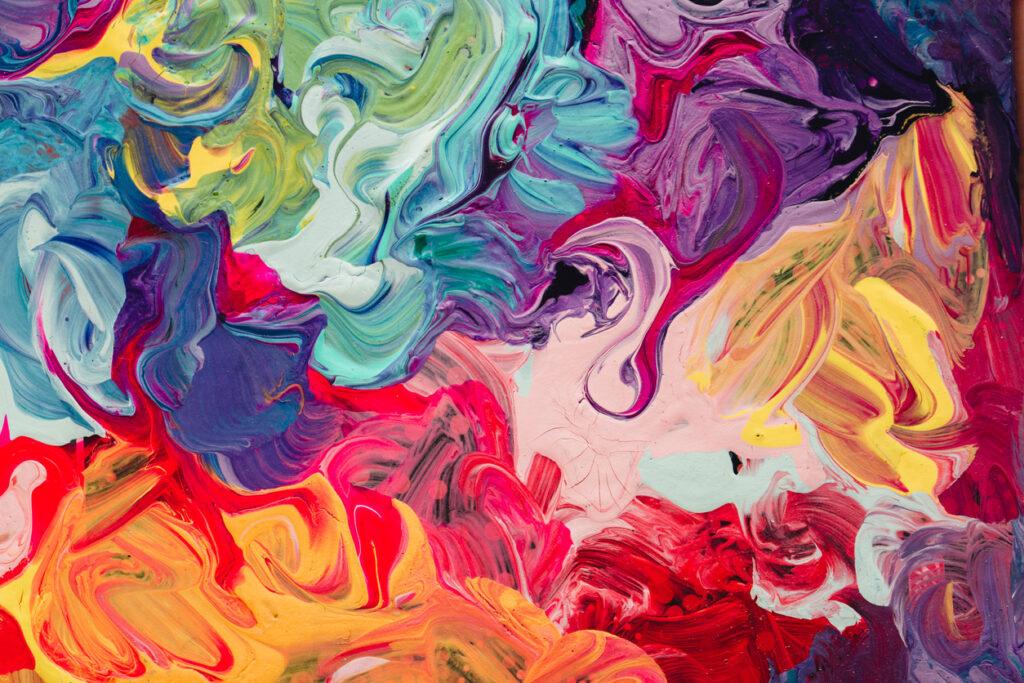I have only recently begun to use a Drying Retarder with my acrylic paint, and I’m still a little uncomfortable with it to be honest, preferring to use a little extra water when I want to blend more easily.
The issue painters have with only using water is that it can also dilute your color concentration, particularly if you use too much.
Why use a Drying Retarder?
A Drying Retarder consists of propylene glycol which is a glycerin-based medium. In fact over the centuries painters have often used a glycerin and water-based mixture to enhance the amount of time available to work with the paint, making details and blending a lot easier to achieve.
It works by preventing the water molecules from evaporating quite so quickly.
Good to Know
It does not however contain any binders, which are substances that the color pigment can attach to. For example in a crayon, wax would be the binder for the pigment.
In acrylic paint they use acrylic resins which are a sub-group of vinyls. Polymerization of the acrylic acid molecule leads to different kinds of plastic.
When these are mixed with water, a polymer dispersion is created and this is what the color pigment is held together with.
If you don’t have any binders like this, as in a Retarder, and you use too much Retarder, the color pigment has nothing to attach to. It can prevent the paint drying correctly, leaving your painting a bit tacky and potentially create further difficulties later.

Using Acrylic Drying Retarder Successfully
You can be reassured that the Retarder will not lead to any difficulties if you follow the recommendations regarding ratio of Retarder to Acrylic paint.
I can say that it made painting the larger petals of my Peony which you can see on the front of my website a whole lot easier, because those particular petals had complex graduations of light and dark color pigments which took a long time to achieve.
I used Matisse Drying Retarder (a liquid form, not a gel as in other brands).
They recommend only adding 5% to your palette. In terms of practical use, I interpret that to be a few tiny drops. You will learn as you go, how much to mix to obtain the consistency and prolonged usability of your paint, without overdoing it. I think being over cautious is the best way to go.
The Golden brand recommends on their website that the addition of their Retarder should not exceed 14% (1:6) ratio.
Again that is kind of difficult to interpret with a pile of paint on your palette, so I would still just recommend a few tiny drops, and see how it goes. I think the main point is that you don’t over-do it.
Can You Just Use Water?
For smaller areas on my Peony, I continued to use small amounts of water if I felt that the paint was becoming a bit sticky. If this is happening to you, I would also really recommend (if you don’t feel comfortable using a Drying Retarder) that you pay particular and regular attention to your brush. That is to say you need to keep the paint from congealing within the fibers and rinse it thoroughly every now and then.
There can be a temptation to just keep on going, and use your brush to mix your colors and before you know it the head of the brush is drying, and the paint is coming onto your canvas in a mixture of ‘old paint’ and fresh paint. This is particularly true in hot dry weather, or in the middle of winter when the fire is going or the R/C Airconditioning is heating up the air.
Minimizing time intervals for this process can be achieved easily by having a new brush ready to go, and pop your used one in the clean-up water to be attended to later. Don’t necessarily wait for a new color change to do this.
Home Made Retarder Recipe
I found a homemade Drying Retarder recipe on this website if you are interested. It sounds pretty good for acrylic pouring paints although I haven’t tried making it myself. I am just including it because I was amazed that you could make your own so simply.
So at the end of the day, it’s a personal choice, you don’t have to use it or you may just find it revolutionizes your painting experience. Time is a valuable commodity when you’re trying to paint well with acrylics, which is why I understand some people prefer to paint in oils.

